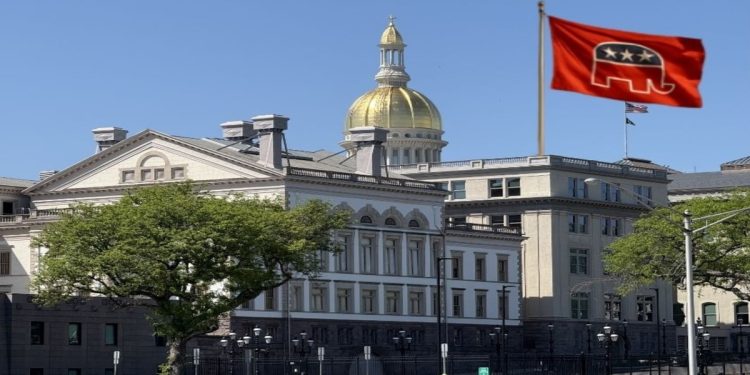Something surprising is happening in New Jersey. Jack Ciattarelli, the Republican candidate for governor, is suddenly doing really well in the polls and in early voting. For a state that’s been under Democrat control for decades, that’s a pretty big deal.
Back in 2021, the most accurate poll had Jack Ciattarelli just a few points shy of beating Democrat Governor Phil Murphy. That same poll now has him ahead. According to the numbers, Ciattarelli is leading Democrat Congresswoman Mikie Sherrill by one or two points. Sherrill’s campaign has been reeling after reports that she boosted her wealth tenfold since taking office. The scandal turned her into a poster child for insider trading and cashing in on public office. Ciattarelli has hammered her on it, painting her as just another career Democrat in a state many believe has been run into the ground.
Here’s the difference this time. For the first time, Ciattarelli is not just close but actually leading. He never led against Murphy in 2021, but now he has pulled ahead of Sherrill. That lead grew after a weekend debate that badly damaged her campaign.
Early voting numbers are telling the same story. When comparing current mail-in ballot returns to 2021 levels, Ciattarelli is seven points ahead of his pace from four years ago. Districts that supported Trump by wide margins are outperforming their 2021 early ballot requests, while Democrats are down by 10 points compared to the same period. That’s a 17-point swing in Ciattarelli’s direction. If this trend holds, New Jersey could be on the verge of a political earthquake. Imagine one of the bluest states in the country shifting red.
And it’s not just New Jersey. Virginia is also showing strong Republican turnout. Trump-won counties are outpacing Harris-won counties by 2.5 points. Turnout in Trump counties is around 61%, while Harris counties are stuck in the 58–59% range. This is exactly the type of performance Republicans need through October to set the stage for victories in November.
So what explains this shift? It ties directly into the strategy of the new Trump-era Republican Party. The party has pivoted left on economics while moving right on cultural issues. That mix has solidified the traditional Christian conservative base while also pulling in working-class Democrats. By pushing pro-tariff and pro-union policies, Republicans have brought in both white and non-white working-class voters. That kind of coalition building hasn’t been seen in decades.
VISIT OUR YOUTUBE CHANNELTrump’s strength in 2024 came from maximizing rural white working-class turnout and cutting into Democrats’ margins in the cities with record support among non-white working-class voters. At the same time, his focus on cultural battles—opposing radical gender policies, critical race theory, and other progressive causes—has split the Democratic base. Many voters now feel disillusioned with their own party’s agenda.
This dual pivot—left on economics, right on culture—looks a lot like the political realignment created by Franklin Roosevelt’s New Deal coalition. If Ciattarelli in New Jersey and Winsome Sears in Virginia succeed this November, it could mark the start of long-term Republican dominance. Working-class voters of all backgrounds may finally be abandoning the Democratic Party.
Two major upsets in states long considered Democratic strongholds would not just be victories. A red wave in New Jersey and Virginia would be a political earthquake.
WATCH:
#jackciattarelli #newjerseygovernorrace #redwave2025






















buy cocaine prague prague drugstore